
California Modern Gets Zoom Treatment
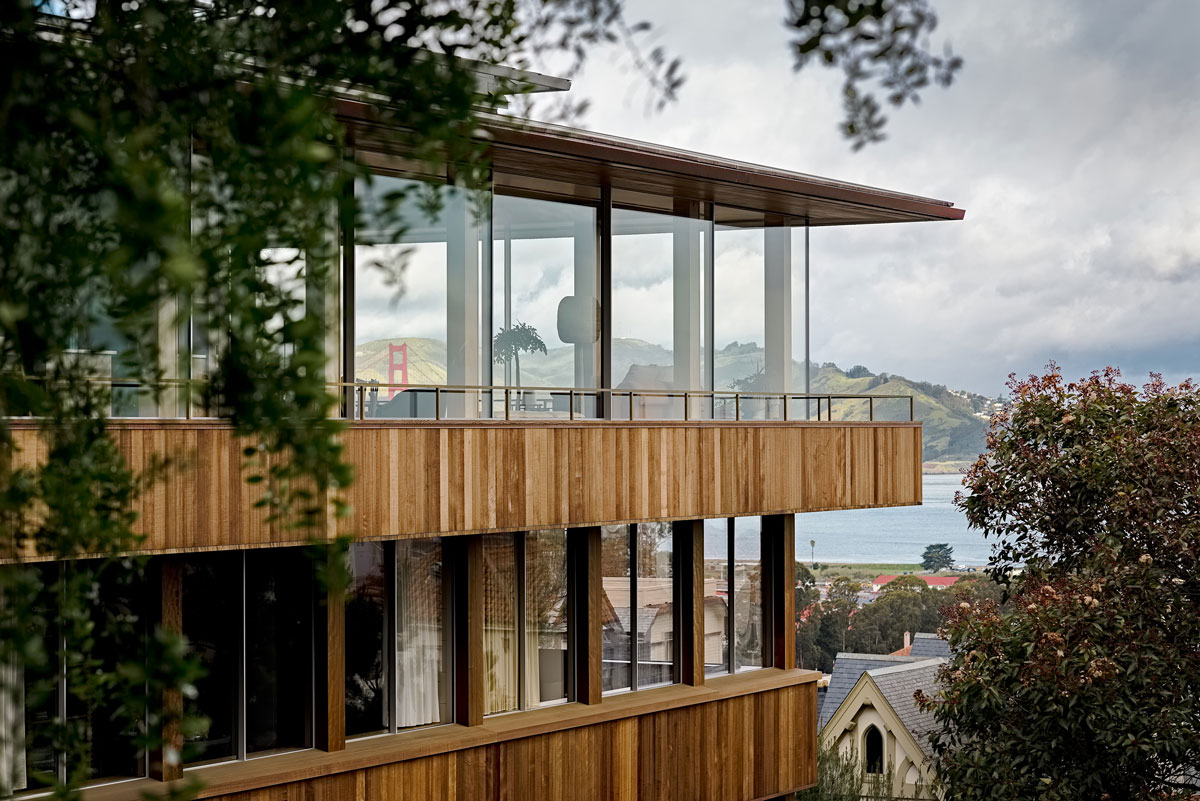 |
What are the challenges in designing a modern house? In restoring one? Should they be restored at all? If so, which ones – and how? And what’s so good about living in modern homes anyway?
Two celebrities of today's California mid-century modern world tackled these and other topics during a mostly freeform back-and-forth question-and-answer session held in June via Zoom, 'Midcentury Masters: The California Modernist Tradition,' now available for all to see on Facebook. It’s a good way to pass an hour.
Not surprisingly, one topic was health, both as it affects people individuality, and the health of public discourse.
Asked to name his favorite architect, Leo Marmol FAIA, managing partner of the 200-person architectural firm Marmol Radziner in Los Angeles, had no answer. Then he thought of Irving Gill, the proto-modernist designer from San Diego.
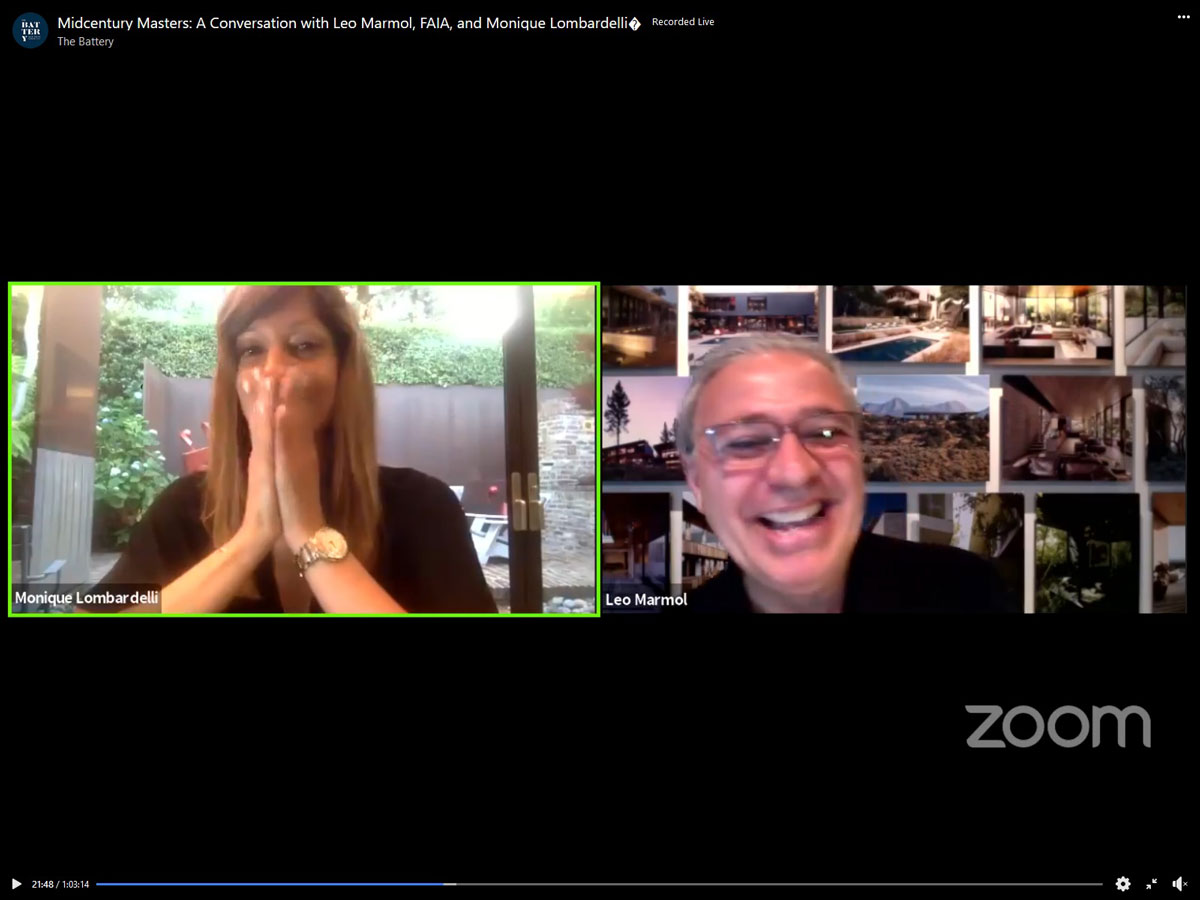 |
Gill was all about simplifying the house, getting rid of nooks and crannies. “That was about hygiene. Irving Gill was about sanitizing his buildings to make them healthier,” Marmol said.
“Modernism has such a history of health,” he said, mentioning also the work of Richard Neutra.
Marmol made the point that modern homes are healthier because they let in air and light – and provide connections with the out of doors.
“If there is anything that we’re learning today,” during the lockdown and pandemic, “it’s that we have this innate desire to connect to other people and the environment, and modernism allows us to connect in a deeper way,” he said, adding, “It’s a way of living, more than a style.”
Living in a traditional home, he said, “You don’t have a sense of what the weather’s like without checking the weather. That understanding of things, like weather and time, just becomes more natural.”
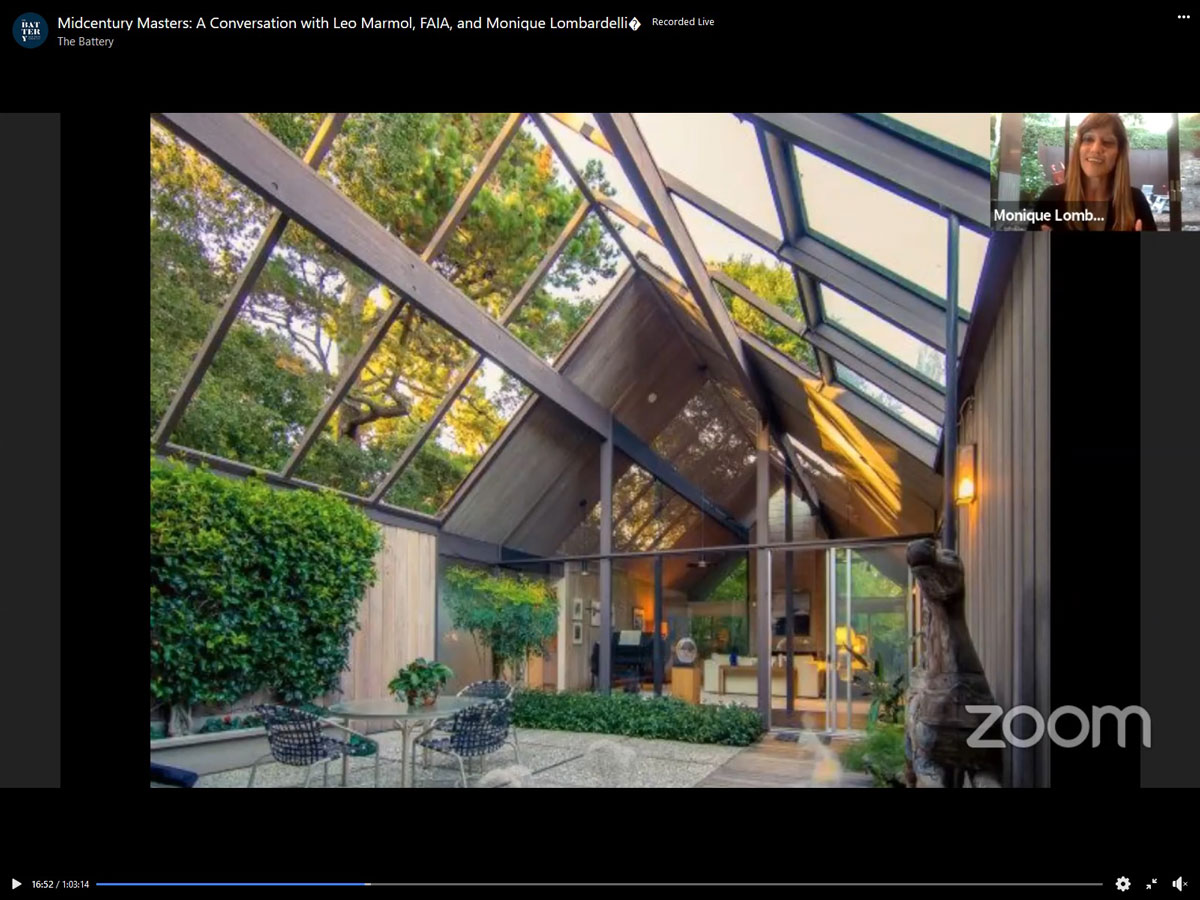 |
Monique Lombardelli, the 'Eichler lady' who runs the brokerage Modern Homes Realty in Palo Alto, spoke much about preserving modern homes. After a ten-minute history of Eichler homes, she discussed how she strives “to find buyers who would preserve the architecture of these homes.”
She described how, all too often, custom mid-century modern homes on large lots on the Peninsula are marketed as teardowns. “These agents don’t even count the house as part of the price. They are just selling it as land.” Lombardelli and her team look for such homes and try to snatch them from the wrecking ball.
Marmol began the event by telling the history of modernism in ten minutes. He contrasted the International Style with the Organic architecture of Frank Lloyd Wright, the former producing homes that are “placed on the site,” the latter producing homes that are “pulled from the site.”
And he discussed how the California modernists drew from both traditions, producing buildings that were often rational – but warm, and sometimes whimsical, attuned to “California culture and climate.”
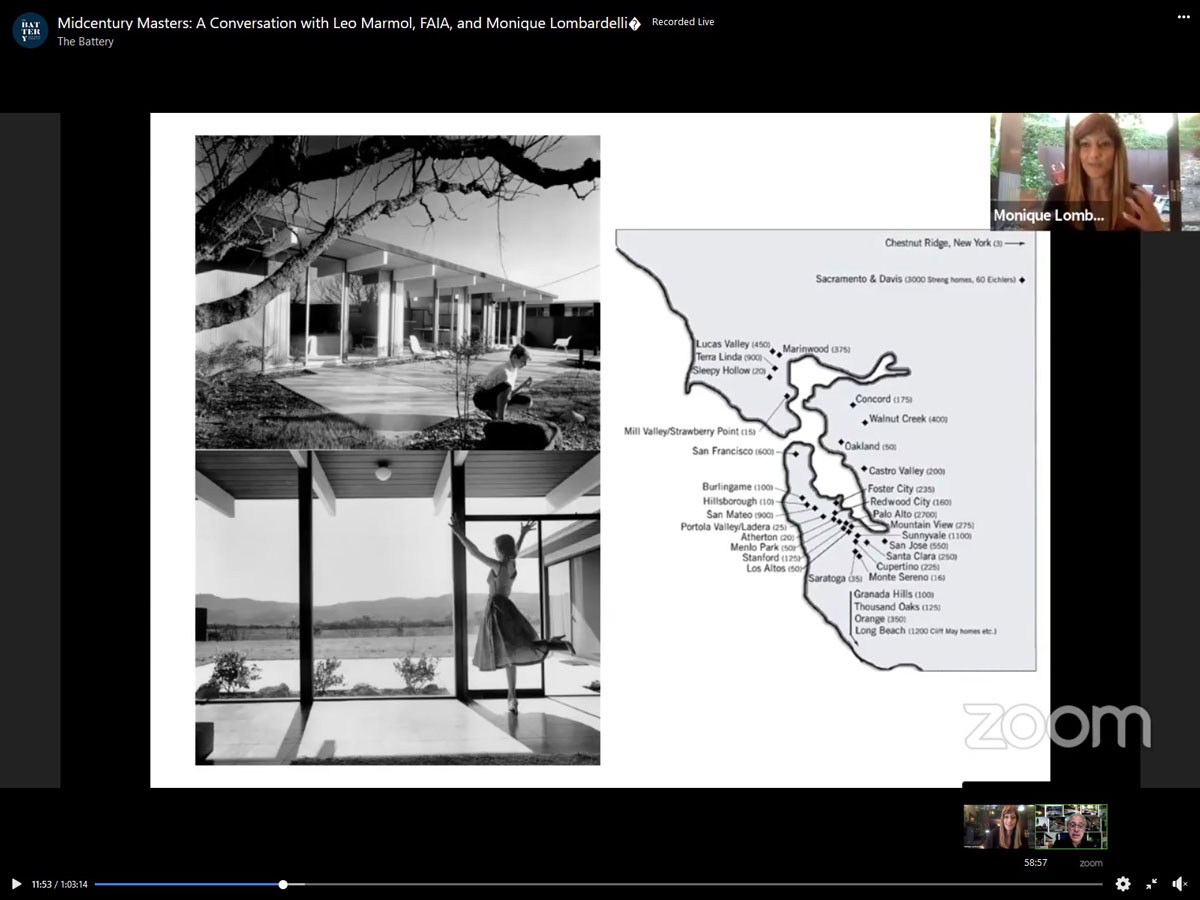 |
While Lombardelli and Marmol were giving their brief talks, questions were pouring in through the chat function – a lot of them. “Bring it on!” Marmol said.
No, Marmol said, his firm has never worked on an Eichler – suprisingly, he suggested, there being 11,000 of them. But Marmol Radziner, which does a variety of work, including a residential tower under construction in downtown LA, has done some amazing restorations , including of Neutra’s Kaufmann house in Palm Springs.
“We can’t preserve everything,” Marmol said. “We can’t freeze a moment in time.”
“Should every home by Richard Neutra be saved? I would argue no. It can’t be. The world can’t accommodate that,” he said.
Some houses really are too small to make economic sense in their current locations, he said. Others are too far gone structurally. Yes, any house can be saved – with enough money, he said, and his firm has worked with owners to do that.
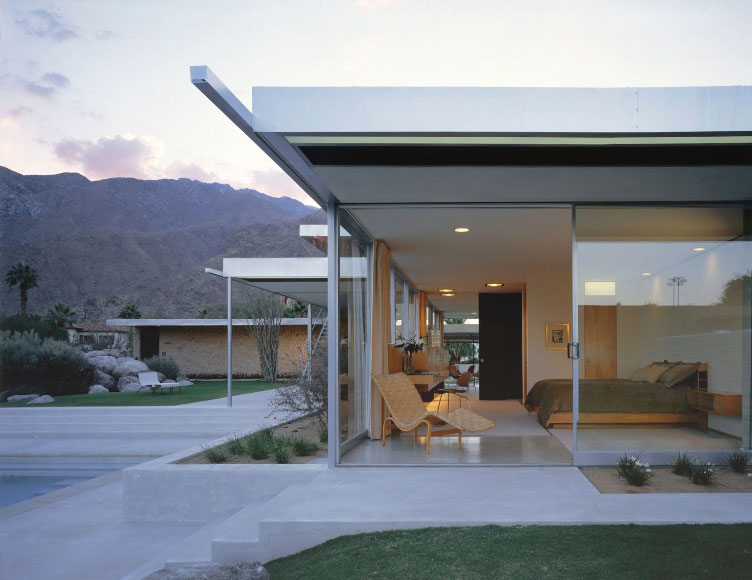 |
Yes with enough money any house can be brought back.
“We have been involved in the restoration of houses that were really falling to pieces, disintegrating before our very eyes,” he said. Owners who save such houses, or any historic houses, “really are heroes.”
Better to praise them and hold them up as models, Marmol said, than portray people who tear down homes as evil-doers. Such discourse, he suggested, can grow overly rancorous.
Marmol clearly dislikes rancor. Asked by one questioner how to update an Eichler properly, Marmol said the question alone shows the caller is on the right track.
“It begins with respect [for the home’s history],” Marmol said, “and understanding. Maybe it’s like any relationship. And compassion.”
Lombardelli advised, “You don’t want to take away the nostalgia of the home. You don’t want to alter the soul of the home. But you really have to make it comfortable and livable.”
The event was given by the Battery, a private club in San Francisco. The live sessions are open to the public. Lombardelli will be doing other talks with other guests, including a talk at 5 p.m. June 18 with architecct Takashi Yanai. “Iwould love to do one monthly,” Lombardelli says. “I like educating people on Eichlers.”
- ‹ previous
- 87 of 677
- next ›



